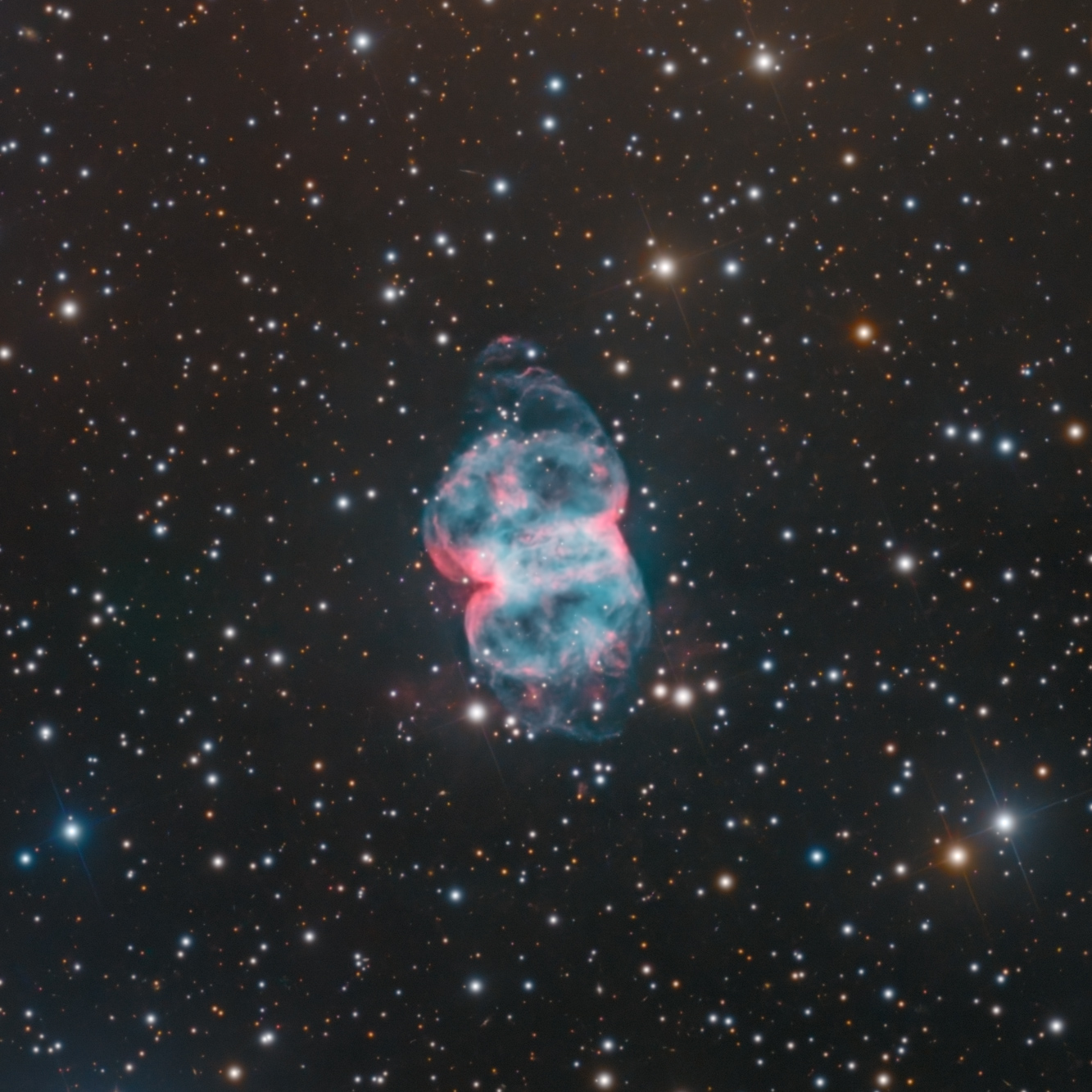

Messier 76, also known as the Little Dumbbell Nebula (this is a full-resolution, cropped, image) because
of its vague resemblance to the much larger Dumbbell Nebula, M27, is a planetary nebula,
the type of nebula which it is generally thought our Sun will produce as nuclear fusion slows and then dies in its core, and it expels its outer layers of gas. Unlike M27, most of M76 is quite dim, which
presents a challenge both in taking the image and in processing it. M76 appears about 4 arcminutes across (including the faint parts). Its distance from Earth is estimated to be about 2,500 light years;
at that distance, it is about 3 light years long. Technical Information: Ha:OIII:L:R:G:B: 600:630:729:180:240:300 (a total of almost 45 hours of light-frame exposure time); luminance was a blend of forty-five 15-minute images through a luminance filter,
eighteen 3-minute images through a luminance filter, and twenty 30-minute images through an Ha filter; red was a blend of twelve 15-minute images though a red-pass filter, and twenty 30-minute images
through an Ha filter; green was a blend of sixteen 15-minute images through a green-pass filter and twenty-one 30-minute images through an OIII filter; blue was a blend of fifteen 20-minute images
through a blue pass filter and the OIII data also used in the green channel. Equipment: RC Optical Systems 14.5 inch Ritchey-Chretien carbon fiber truss telescope, with ion-milled optics and RCOS field flattener, at about f/9, and an SBIG STX-16803 camera with
internal filter wheel (SBIG filter set), guided by an SBIG AO-X, all riding on a Bisque Paramount ME German Equatorial Mount. Image Acquisition/Camera Control: Maxim DL, controlled with ACP Expert/Scheduler, working in concert with TheSkyX. Processing: All images calibrated (darks, bias and sky flats), aligned, combined and cropped in Pixinsight. Color combine in Pixinsight. Some finish work (background neutralization,
color calibration, NoiseXTerminator and BlurXterminator, and HDR Multiscale Transform) done in Pixinsight; some cleanup finish work was done in Photoshop CC. Location: Data acquired remotely from Sierra Remote Observatories, Auberry, California, USA. Date: Images taken on many nights in October and November of 2022. Image posted January 6, 2023. Date: Image scale of full-resolution image: 0.56 arcseconds per pixel. Seeing: Generally good CCD Chip temperature: -25C Copyright 2022, 2023
Mark de Regt
The reddish parts of the nebula represent ionized hydrogen; the blue/greenish is doubly-ionized oxygen.
I last imaged this 20 years earlier, from my suburban yard, with considerably more elemental equipment. Perhaps better equipment, better location, and a bit more skill helps; see my old version
here.